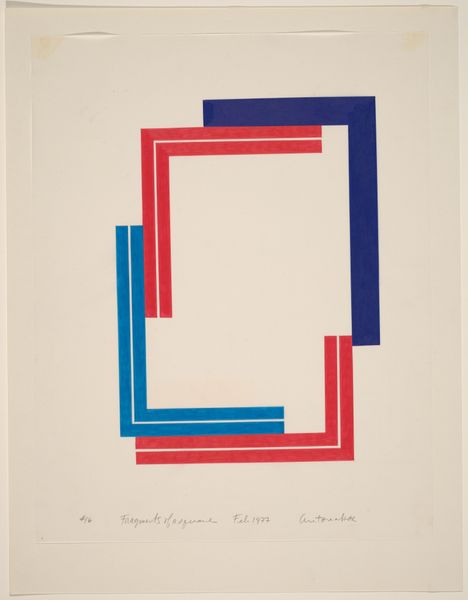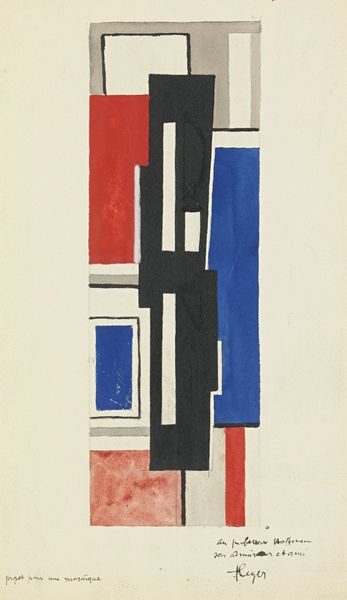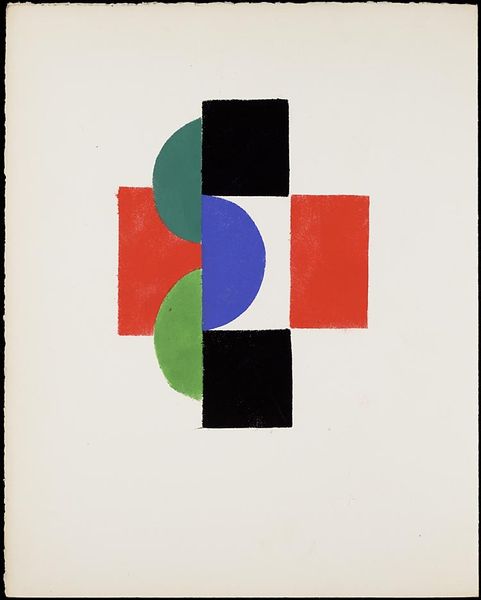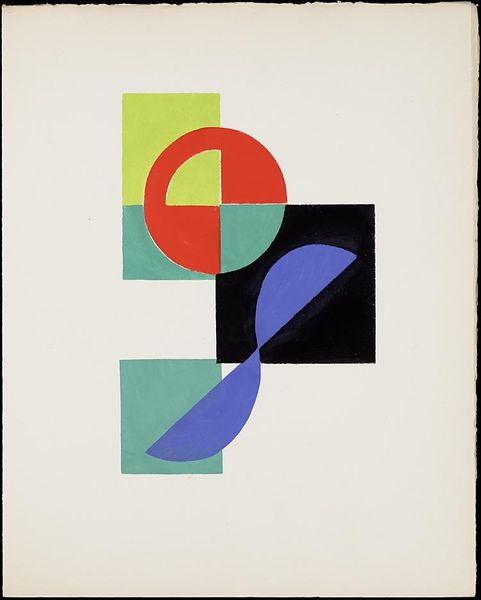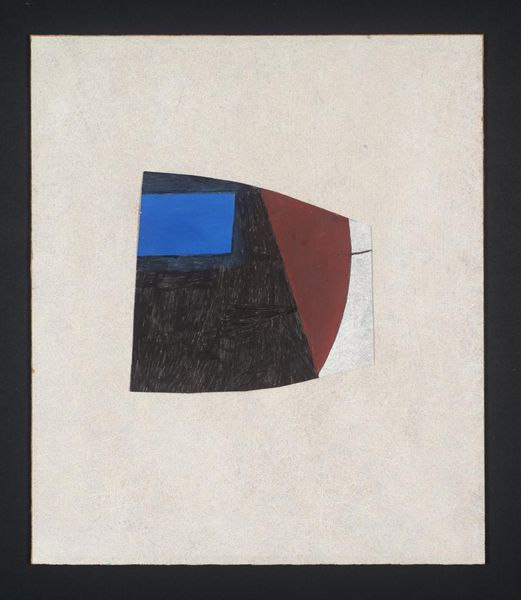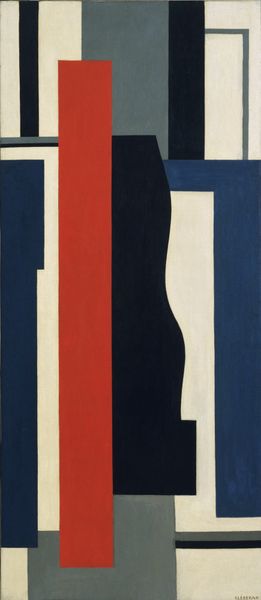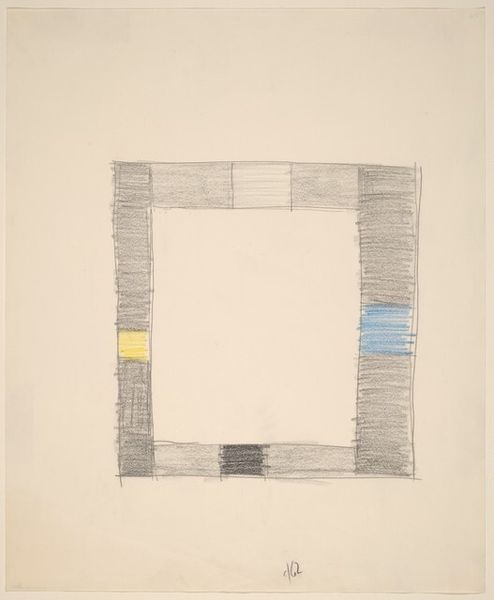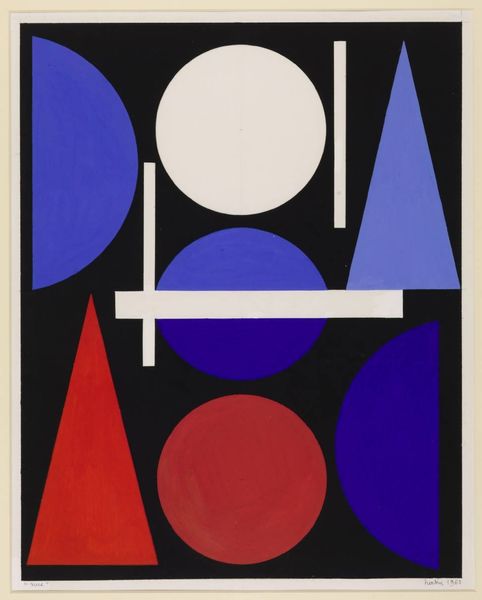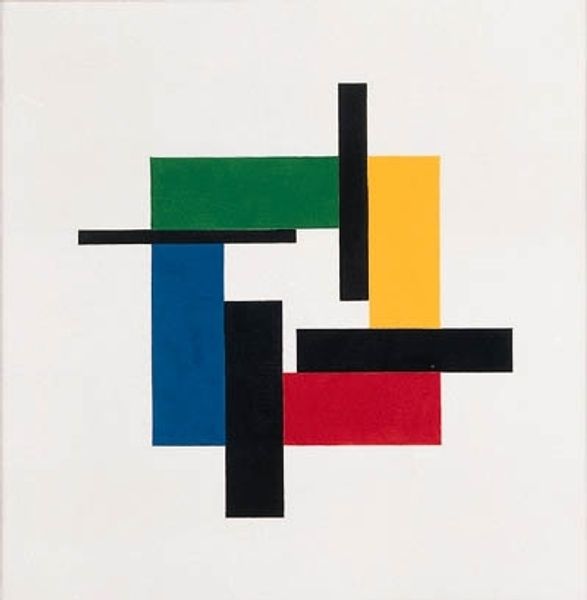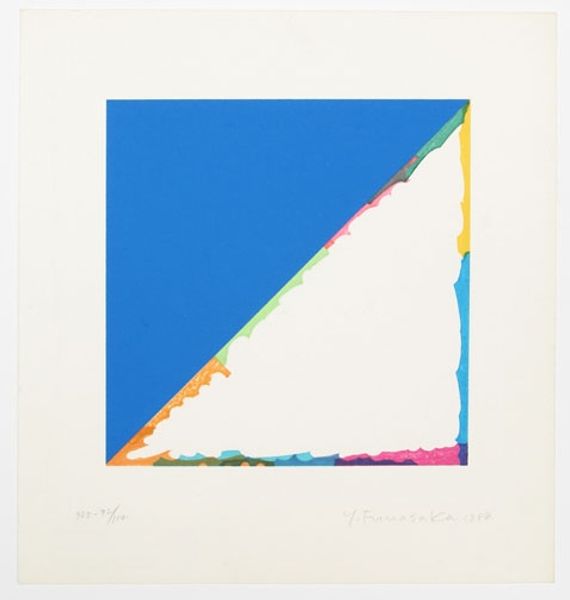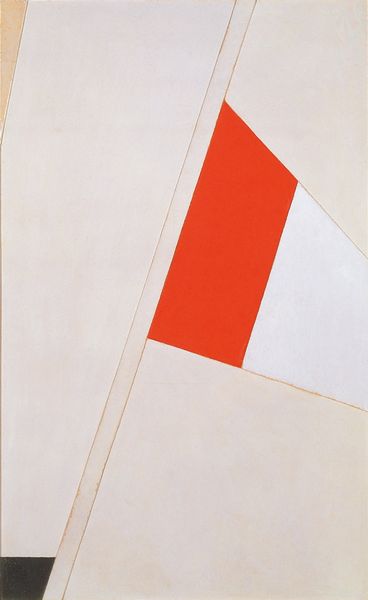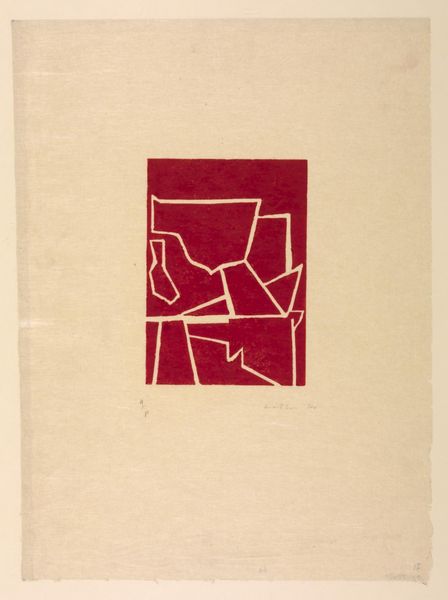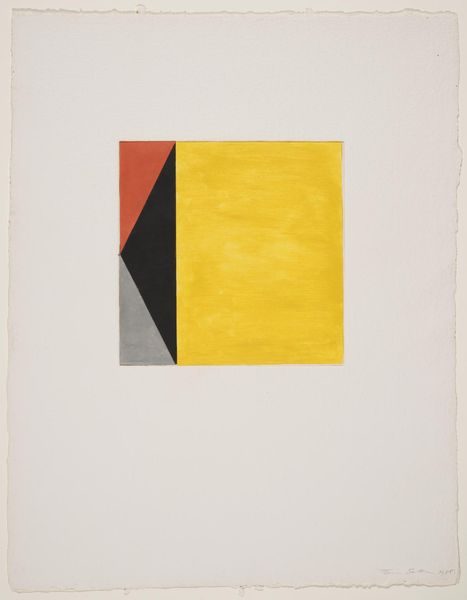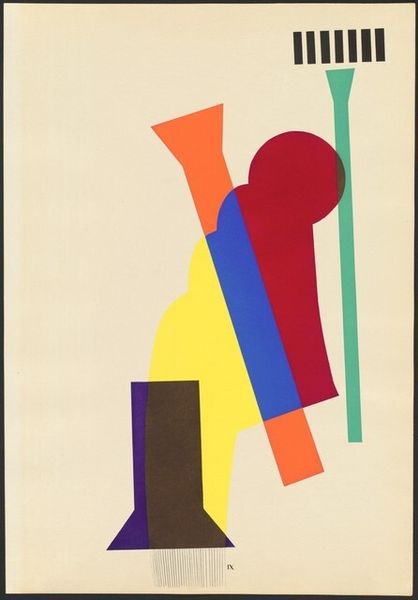
drawing, mixed-media, print, stencil, acrylic-paint, paper
#
drawing
#
mixed-media
#
stencil
# print
#
stencil
#
acrylic-paint
#
paper
#
form
#
geometric
#
geometric-abstraction
#
abstraction
#
line
#
modernism
Dimensions: overall: 35.5 x 27.9 cm (14 x 11 in.)
Copyright: National Gallery of Art: CC0 1.0
Editor: Here we have Stephen Antonakos's "Fragments of a Square #3" from 1977, a mixed-media piece using acrylic paint, stencil, and print on paper. It's visually striking but also feels...incomplete, like a puzzle missing pieces. How do you interpret this work, especially considering its title? Curator: The fragmentation is key. Think about 1977, a period marked by social and political unrest. Antonakos offers us not a solid, stable form, but fractured geometry. What might this incompleteness signify in terms of societal structures or even personal identity? Editor: So, the fragmented square could be a commentary on the instability of societal norms or identities during that time? I hadn’t considered that. I was stuck on the visual aspect of abstraction. Curator: Exactly! The choice of simple geometric forms is not arbitrary. Abstraction allows the artist to move beyond the literal, to engage with deeper emotional and philosophical themes. Think about how minimalism stripped art down to its bare essentials, almost as a rebellion against consumer culture and superficiality. Editor: That's fascinating. The limited color palette too, almost feels like a deliberate choice to strip away any distractions and focus on the essential forms and their relationships. Do you think that also is hinting to the socio-political struggles in the late 70's? Curator: The use of primary colors underscores a return to fundamental principles, while their interaction suggests tension. Notice the interplay of red and blue – opposing forces contained within a defined space, symbolic of the push and pull within a culture grappling with its identity. It subtly captures a society at odds with itself, where traditional roles and conventions are being challenged and reshaped. What do you think of that interpretation? Editor: That connection between form, color, and socio-political context makes the piece so much more compelling. Thanks for making me look at the painting and its meaning more widely. Curator: It works the other way around! That's how art can make us reflect on what is important in our current moment.
Comments
No comments
Be the first to comment and join the conversation on the ultimate creative platform.
